How to identify triggers for challenging behavior
Understanding and Managing Challenging Behavior in Individuals with Autism and Intellectual Disabilities

Introduction to Identifying Triggers for Challenging Behaviors
Challenging behaviors are actions or reactions that can be disruptive or harmful, often reflecting unmet needs, desires, or emotional states. Recognizing and understanding the triggers behind these behaviors is essential for effective intervention. This article explores methods, tools, and strategies to help caregivers and professionals identify the underlying causes of challenging behavior, thereby supporting better management and prevention.
The Importance of Behavioral Observation and Record-Keeping
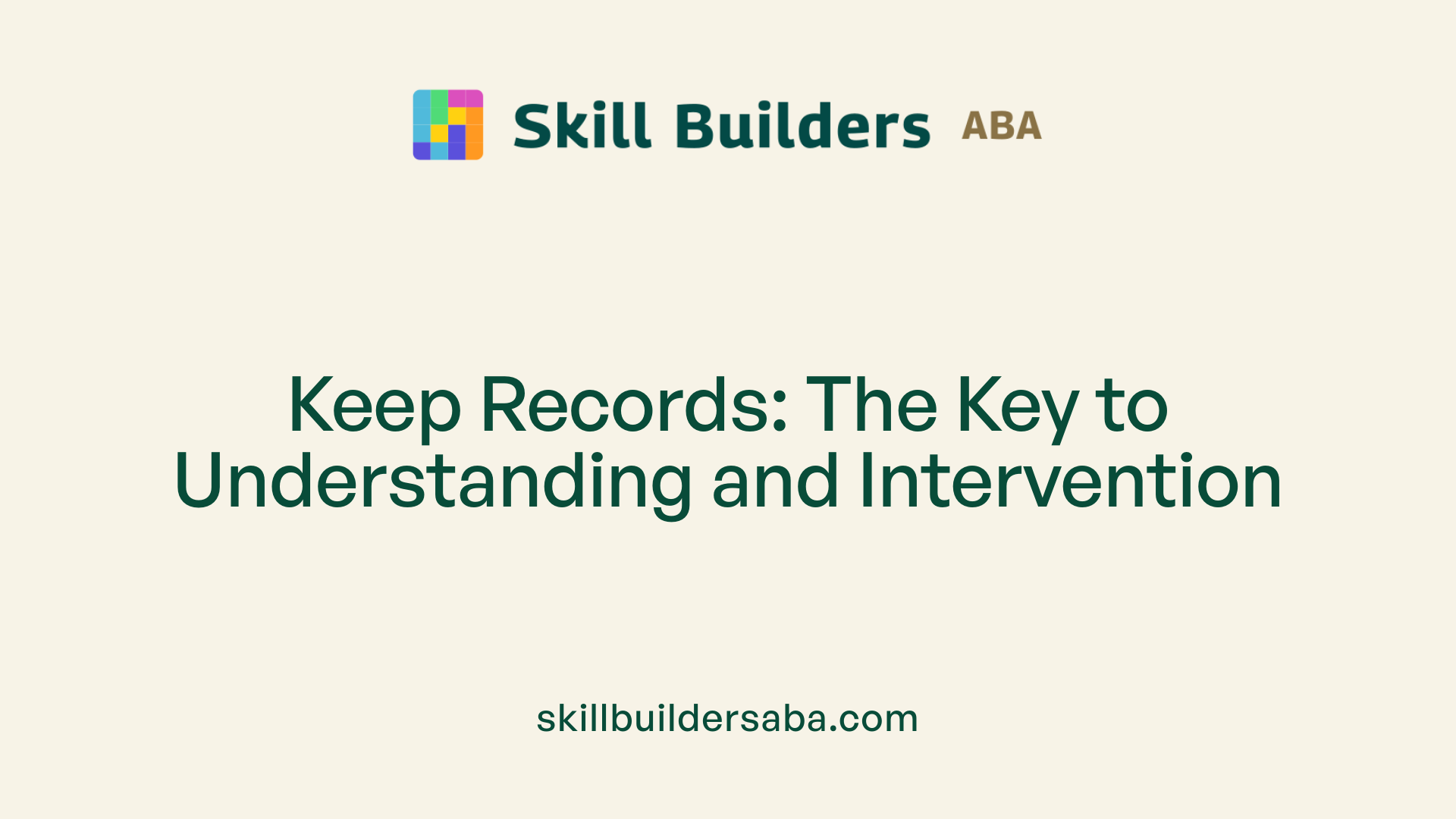
Use of ABC Charts in Behavior Analysis
ABC charts are essential tools in understanding challenging behaviors. They stand for Antecedents, Behaviors, and Consequences. By systematically recording what happens before a behavior occurs (antecedents), the behavior itself, and what follows afterward (consequences), caregivers and professionals can uncover patterns and potential triggers. This structured approach makes it easier to see which environmental, physical, or emotional factors are linked to specific behaviors.
Understanding Main Issues Using the CRISIS Framework
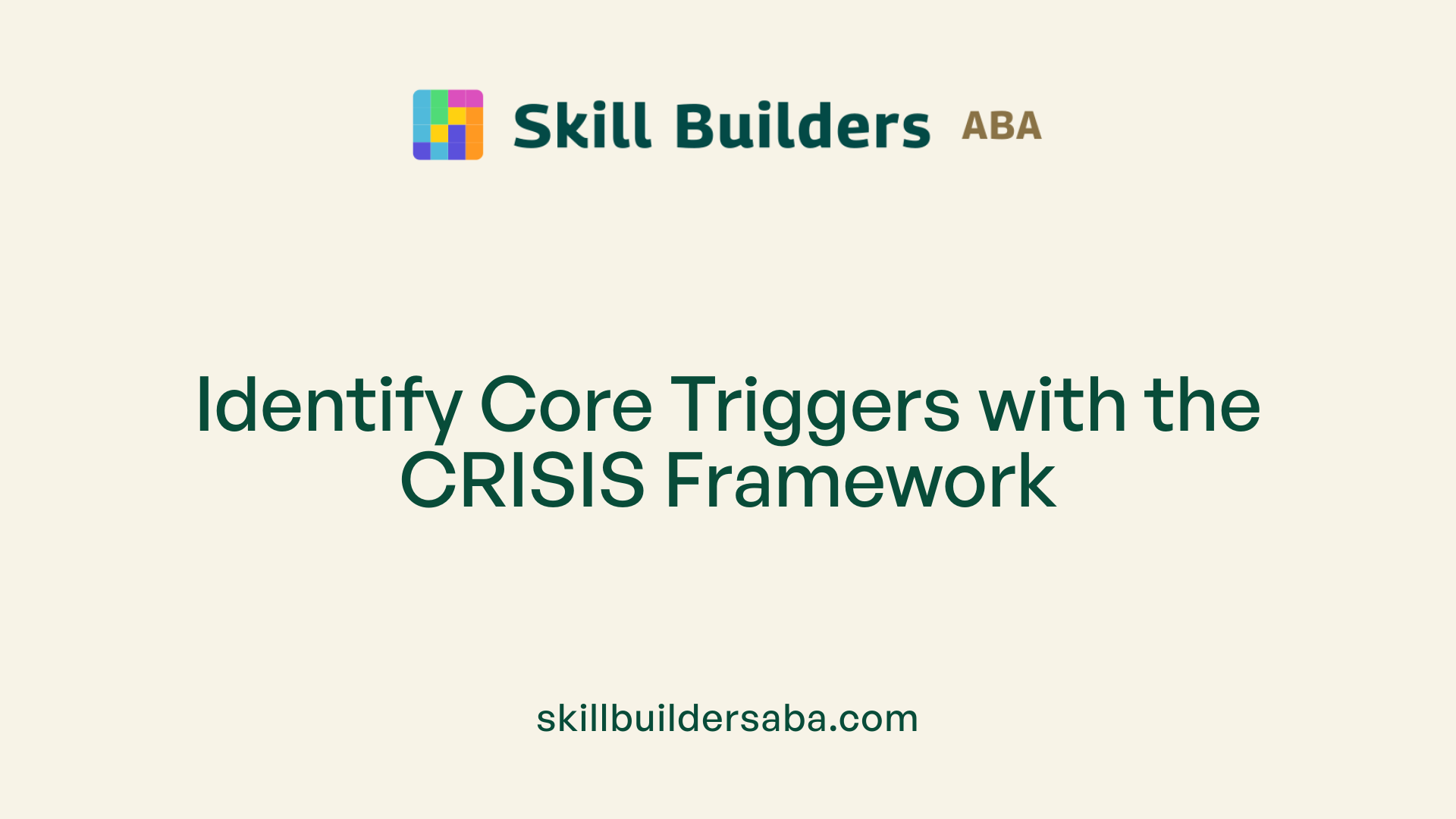
What are common triggers for challenging behavior?
Challenging behaviors in children, especially those with autism, often stem from underlying issues outlined in the CRISIS framework. These triggers can be physical, emotional, or environmental.
Communication difficulties are a primary cause. When children struggle to express their needs or feelings verbally, they may resort to aggressive, withdrawn, or disruptive actions to communicate discomfort or desires.
Sensory overload is another common trigger. Difficulties processing sensory information — such as loud noises, bright lights, or crowded spaces — can lead to behaviors like aggression, self-harm, or withdrawal.
Changes in routines or environments can cause stress and anxiety. For children who rely heavily on routine, unexpected modifications can trigger distress and challenging behaviors.
Additional triggers include physical health issues such as pain, hunger, fatigue, or illness. Unmet needs, like needing a break or social attention, also play a significant role.
Children might also react to emotional stressors like anxiety, trauma, or conflicts within their home or school settings.
By understanding these triggers, caregivers can adopt strategies to prevent behaviors before they escalate. Recognizing the purpose behind actions—whether to seek attention, escape a demand, or seek sensory input—allows for more effective intervention.
Proactively managing environmental factors, providing communication support, and maintaining predictable routines can significantly reduce the occurrence of challenging behaviors. This holistic awareness is essential for creating supportive settings that promote positive growth and reduce distress.
Differentiating Between Immediate Triggers and Setting Events

What are immediate triggers or antecedents?
Immediate triggers, often called antecedents, are specific occurrences that happen just before a challenging behavior. They act as direct prompts that set off the behavior. For example, a child might have a tantrum after being told 'no' or in response to a loud noise. These triggers are usually easy to observe and pinpoint because they happen close in time to the behavior.
They can include a wide range of situations such as sudden changes, physical discomfort, or environmental distractions. Recognizing these triggers helps caregivers and educators understand what immediately causes the behavior, allowing them to react appropriately and prevent future incidents.
What are setting events and how do they influence behavior?
On the other hand, setting events are broader, longer-lasting factors that influence the likelihood of challenging behaviors but do not directly prompt them. These are often underlying conditions that create a state of vulnerability or increased sensitivity. Common setting events include being hungry, tired, stressed, or experiencing environmental stressors like noise or changes in routine.
Unlike immediate triggers, setting events are not always visible at the moment the behavior occurs. They shape the overall environment or emotional state, making a person more susceptible to triggers. For example, if a child is sleep-deprived (a setting event), they may be more prone to reacting negatively to minor frustration.
Strategies for addressing both
Effectively managing challenging behaviors requires a dual approach to address both immediate triggers and setting events:
Identifying and modifying triggers: Observing what happens right before a behavior helps in implementing strategies such as offering warnings before transitions, providing environmental adjustments, or teaching alternative communication skills.
Addressing setting events: Ensuring a person’s physical and emotional needs are met can reduce susceptibility to triggers. This might include maintaining regular routines, managing environmental stressors, or providing sensory supports to help regulate sensory overload.
Proactive planning: Recognizing that setting events increase risk helps caregivers prepare by setting the environment or routine to minimize their impact. For example, scheduling quiet time after a busy day or providing calming activities when stress indicators appear.
Consistent responses: Responding calmly and predictably to triggers and behaviors helps create a sense of safety and stability, minimizing escalation.
Understanding the distinction and relationship between immediate triggers and setting events allows caregivers to develop comprehensive strategies that prevent challenging behaviors and promote better emotional and behavioral regulation.
Recognizing Behavioral Signals and Patterns

How can caregivers monitor subtle cues and body language?
Monitoring subtle cues and body language involves attentive observation of the child's physical posture, facial expressions, and gestures. These non-verbal signals often indicate rising distress, frustration, or sensory overload. For example, clenched fists, frowning, avoidance eye contact, or fidgeting may suggest that the child is becoming overwhelmed or anxious.
Caregivers should also observe behaviors such as increased blinking, breathing changes, or vocalizations, which can signal emotional escalation. Keeping detailed notes on these cues helps in understanding individual triggers.
What are early warning signs of escalation?
Early warning signs are behaviors or signals that suggest a child is approaching a point of difficulty. These might include increased irritability, social withdrawal, repetitive behaviors, or visible signs of stress like tears or agitation.
Recognizing these signs early allows adults to intervene with calming techniques or distractors before behaviors escalate into challenging outbursts.
Monitoring patterns over time is crucial. Consistent early signs, like reluctance to engage or increased physical movements, can act as indicators that a trigger is imminent.
Why is comprehensive observation and documentation important?
Observation provides the raw data needed to understand what triggers challenging behaviors. Documenting behaviors includes noting the time, location, what activity was occurring, who was present, and what the child was doing immediately beforehand.
Using tools like ABC charts streamlines this process, helping caregivers identify patterns and hypothesize potential triggers.
Thorough records support consistent responses and inform tailored intervention strategies. They also enable teamwork by sharing insights across caregivers or professionals.
Overall, combining keen observation, early warning sign recognition, and detailed documentation forms the foundation for effective behavior management.
Educational and Practical Strategies for Prevention and Management

What are effective educational and practical approaches for managing challenging behaviors?
Managing challenging behaviors requires a thoughtful combination of strategies that are proactive, preventive, and reactive. Evidence-based frameworks like Positive Behavioral Interventions and Supports (PBIS) and the Multi-tiered System of Supports (MTSS) serve as foundational approaches.
At the classroom level, low-intensity strategies play a crucial role. These include offering specific praise for desired behaviors, providing clear precorrections to set expectations, and giving high-probability requests that succeed quickly. Offering choices empowers children by giving them a sense of control, which can diminish frustration and opposition. Active supervision and close monitoring help catch early signs of escalation, allowing timely intervention.
A vital aspect of management is teaching children functional communication skills. This can involve using visual supports, social stories, or augmentative and alternative communication (AAC) devices to help them express needs or feelings effectively. Additionally, developing coping skills like calming techniques, emotion regulation strategies, and problem-solving promotes resilience and reduces the likelihood of disruptive behaviors.
Implementing individualized behavior intervention plans is essential. These plans should include antecedent modifications—such as adjusting environmental stimuli or routines—to prevent triggers. Reinforcing positive behaviors consistently helps establish a new pattern of adaptive responses.
Creating a positive environment is equally important. Routines and visual schedules reduce uncertainty, while designated calming areas provide a safe space to regulate emotions. Involving students in setting rules and expectations fosters ownership and cooperation. Strong relationships built on trust and understanding also minimize challenging behaviors.
Overall, combining these strategies — through education, environment adjustment, and skills development — creates a comprehensive approach. It addresses the root causes of behavior and promotes a supportive, responsive setting conducive to learning and growth.
The Role of Sensory Processing and Physical Needs in Behavior
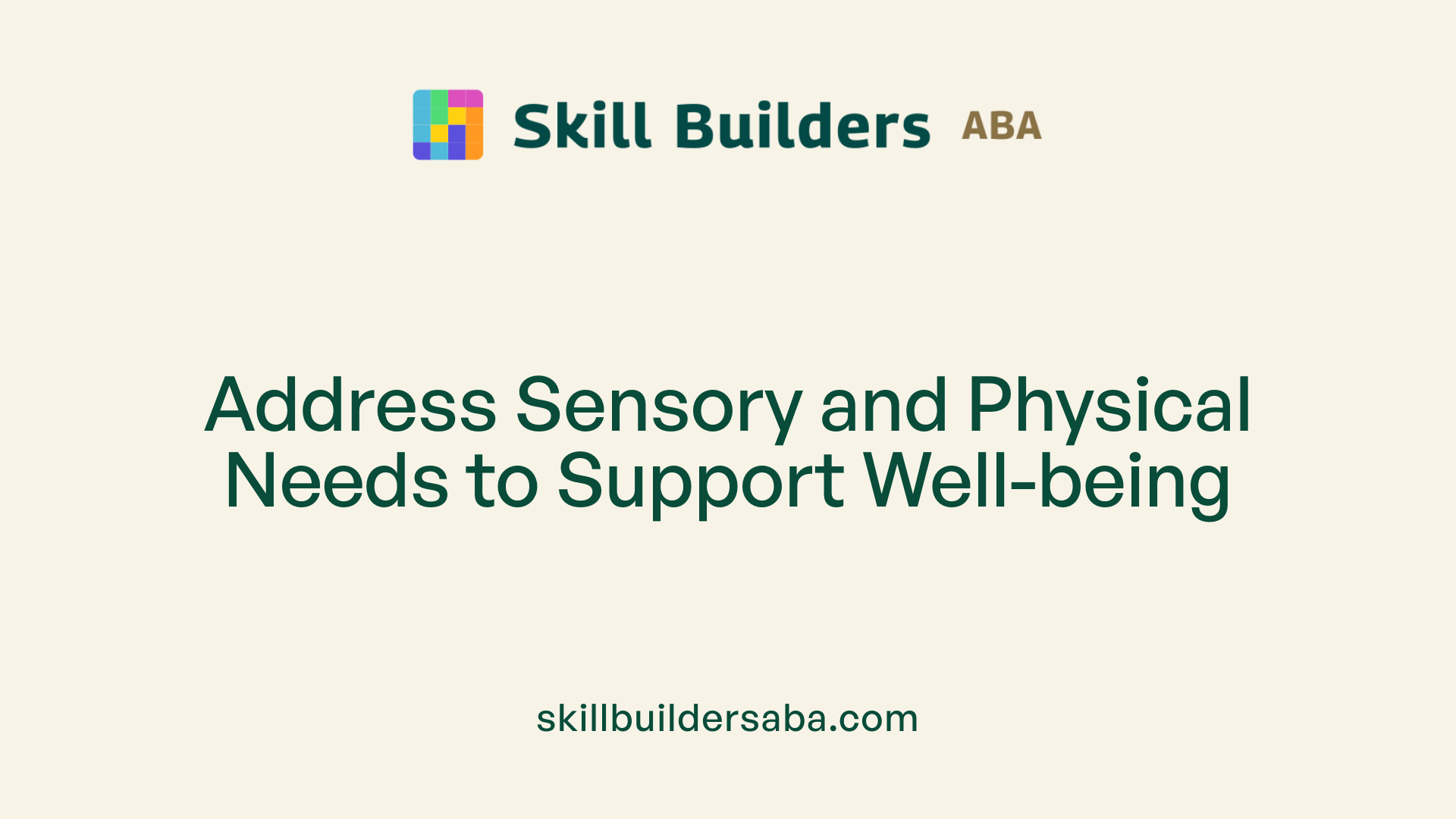
What physical and sensory factors influence challenging behavior?
Physical health and sensory sensitivities significantly impact challenging behaviors in children with ASD. Physical triggers include symptoms of illness, medication side effects, infections, pain, dehydration, hunger, fatigue, recent injuries, incontinence, constipation, and unmet physical care needs. When children experience discomfort or health issues, they may display behaviors like aggression, withdrawal, or self-harm as ways to communicate their distress.
Sensory overload is another common factor. Difficulties processing sensory information can leave children feeling overwhelmed, leading to escalated behaviors such as aggression or self-injury. For example, loud noises, bright lights, or crowded environments are typical sensory triggers that can cause distress.
Environmental conditions play a vital role. Excessive noise, temperature extremes, or intrusive situations can worsen sensory sensitivities. Recognizing these factors allows caregivers to implement environmental modifications. Simple changes like reducing noise levels, providing access to quiet spaces, or ensuring physical comfort help prevent sensory overload.
Addressing sensory needs often involves tailored interventions, such as sensory diets or supports designed to regulate sensory input. These strategies help children manage sensory sensitivities, reducing the chances of adverse behaviors.
| Physical and Sensory Triggers | Examples | Support Strategies |
|---|---|---|
| Physical health issues | Pain, infection, dehydration, fatigue, injury | Medical attention, rest, hydration |
| Sensory overload | Loud noise, bright lights, crowded settings | Noise-canceling headphones, sensory breaks, quiet zones |
| Environmental discomfort | Uncomfortable clothing, extreme temperatures | Comfortable clothing, climate control |
Understanding and addressing both physical and sensory factors are crucial in supporting children with ASD. Proper environmental modifications and sensory supports can greatly improve their well-being and reduce challenging behaviors.
The Impact of Emotional and Psychological Factors
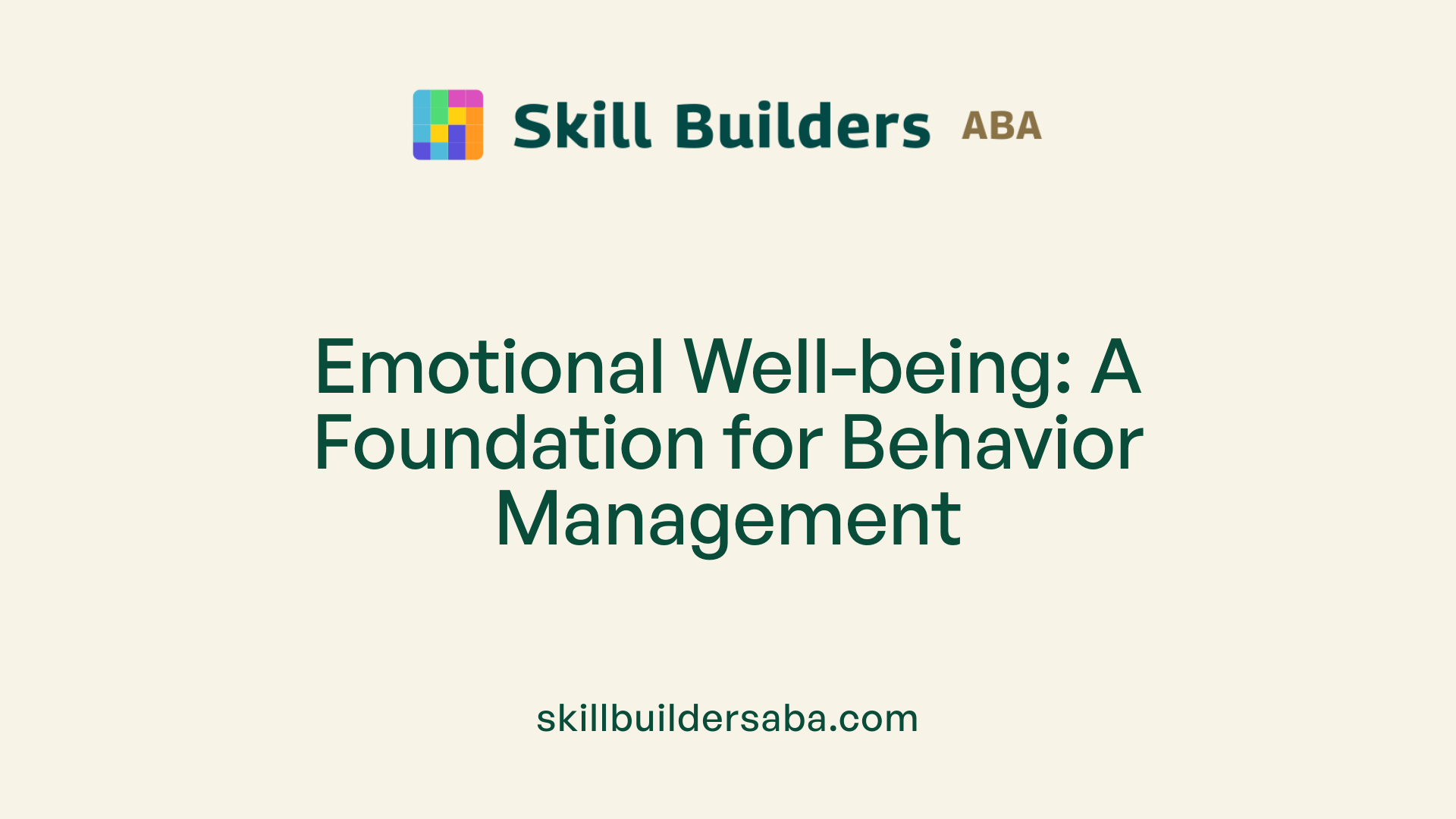
What emotional factors act as triggers for challenging behavior?
Emotional states such as anxiety, stress, frustration, anger, depression, and past trauma frequently serve as triggers for challenging behaviors. When someone feels overwhelmed by these emotions, or has recently experienced loss or difficult life events, they may become more sensitive or reactive. These feelings can heighten their vulnerability, leading to disruptive actions as an attempt to communicate or cope.
Conflicts with family members or care providers, unmet psychological needs, or the mere need for attention can also provoke challenging behaviors. For children and adults with limited verbal skills, these emotional triggers are often expressed through withdrawal, irritability, or agitation.
Recognizing emotional triggers involves attentive observation. Noticing behaviors like social withdrawal, increased irritability, or physical signs of distress helps caregivers identify when someone is emotionally overwhelmed. Context is also important, such as recent stressful events or ongoing emotional struggles.
Addressing and managing these triggers is vital. Strategies include providing a supportive environment, teaching coping mechanisms, and helping individuals develop emotional intelligence. Techniques such as labeling emotions, modeling calm responses, and engaging in activities that promote resilience can reduce the likelihood of behavioral escalation.
Creating a safe, accepting environment that respects emotional needs can make a significant difference. When emotional distress is acknowledged and supported, behaviors often lessen, leading to better outcomes and improved well-being.
Utilizing Assessment Tools and Scales

How can assessment tools be used to identify triggers for challenging behaviors?
Assessment tools like the Comprehensive Assessment of Triggers for Behaviours of Concern Scale (CATS) play a crucial role in understanding what sparks challenging behaviors in children and adults with intellectual disabilities or autism.
CATS includes a comprehensive list of 333 potential triggers, organized into five main domains: external environment, internal environment, expression of volition, characteristics linked to disability, and specific activities or events. This detailed categorization helps caregivers and professionals pinpoint the precise circumstances that lead to disruptive actions.
Developed through caregiver interviews and an extensive literature review, the scale ensures that it captures both practical insights from real-life experiences and scientifically validated factors. When using CATS, observers record the presence or absence of each trigger during interactions, noting details such as time, location, people involved, and the child's emotional or physical state.
By systematically collecting this data over time, patterns emerge that highlight the main antecedents to challenging behaviors. These insights enable practitioners to tailor interventions aimed at reducing or eliminating the triggers, thus preventing episodes before they arise.
Furthermore, regular application and updates of these assessments are essential. They allow caregivers to adapt strategies as the child's needs change, making intervention more effective and responsive. This proactive approach is vital to support positive behaviors and improve overall well-being.
Categories of Triggers Including Environmental, Internal, and Personal Factors
| Category | Examples | Impact on Behavior |
|---|---|---|
| External Environment | Too much noise, unfamiliar settings, lack of privacy | Can cause sensory overload or anxiety leading to challenging behaviors |
| Internal Environment | Physical pain, fatigue, illness | Often triggers behaviors as expressions of discomfort or need |
| Expression of Volition | Desire for control, frustration due to inability to communicate | Results in behaviors like hitting or withdrawing |
| Characteristics of Disability | Difficulties with social understanding, impulse control | May increase vulnerability to triggers |
| Specific Activities/Events | Transitions, scheduled tasks, sensory stimuli | Can prompt behaviors aimed at escape or sensory seeking |
Application of Assessment Results to Intervention Planning
Using detailed assessment results, caregivers can develop personalized strategies to address identified triggers. These can include environmental modifications, routine adjustments, or specific calming techniques.
For instance, if sensory overload is a common trigger, reducing noise levels and offering sensory breaks can be effective. If routine changes spark anxiety, visual schedules, warnings, and countdowns help prepare the individual.
Interventions guided by thorough assessments foster a supportive environment where challenging behaviors are minimized, and positive behaviors are reinforced. These proactive measures enhance the individual's quality of life and facilitate better communication and self-regulation skills.
Practice and Community Collaboration in Behavioral Management
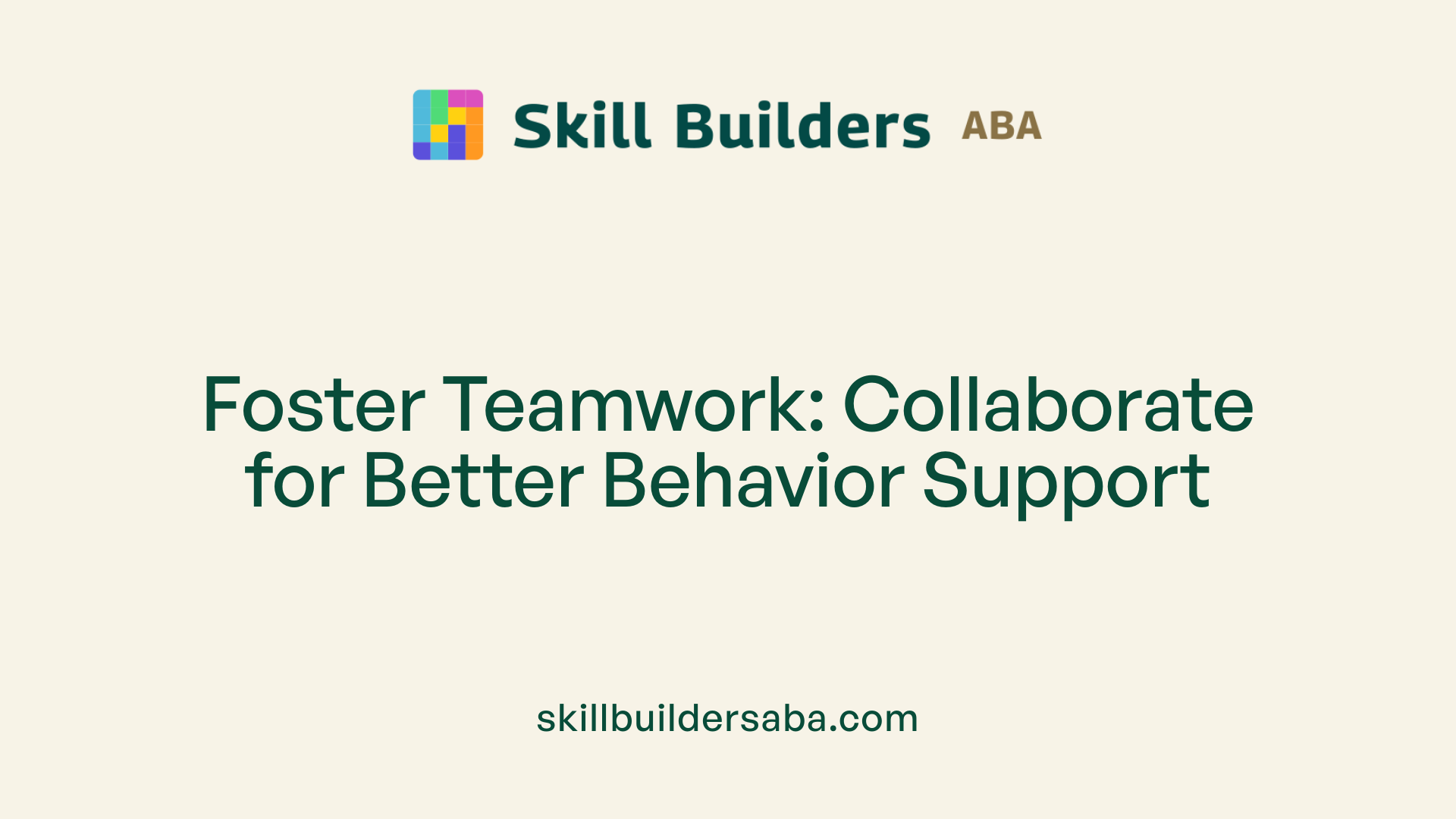
How can collaboration enhance the process of identifying triggers?
Working together as a team significantly improves the process of pinpointing triggers that lead to challenging behaviors. When caregivers, family members, teachers, therapists, and healthcare providers combine their observations and insights, they gain a comprehensive picture of what might be causing a child's distress.
Sharing detailed information about behaviors, environmental factors, emotional cues, and physical needs creates a richer understanding of each individual's unique situation. Regular meetings, use of communication tools like journals or apps, and joint assessments facilitate consistency in tracking patterns and implementing strategies.
Including the individual in discussions, whenever possible, helps tailor approaches to their specific needs. Community supports and resources, such as local programs or peer groups, further reinforce positive behaviors and help identify triggers in natural settings.
A multidisciplinary team—comprising behavioral specialists, psychologists, speech therapists, and medical professionals—addresses complex causes more effectively. Their combined expertise helps develop personalized interventions that prevent triggers from escalating.
Community-based resources, such as support groups and educational workshops, also contribute by providing ongoing guidance and shared experiences. This collaborative approach ensures a more holistic and proactive management of challenging behaviors.
| Participants | Contributions | Benefits |
|---|---|---|
| Families & Caregivers | Observations of daily behaviors, environmental cues | Better understanding of triggers in natural settings |
| Educators & Teachers | Classroom behaviors, social interactions | Insights into routine-related triggers |
| Health & Behavioral Professionals | Clinical assessments, intervention strategies | Expertise in complex triggers and personalized plans |
| Community & Support Groups | Emotional support, shared experiences | Reinforcement and ongoing support |
By working collaboratively, everyone involved can implement consistent strategies, better address triggers, and ultimately support positive behavioral change.
Addressing Physical Discomfort and Routine Changes as Triggers
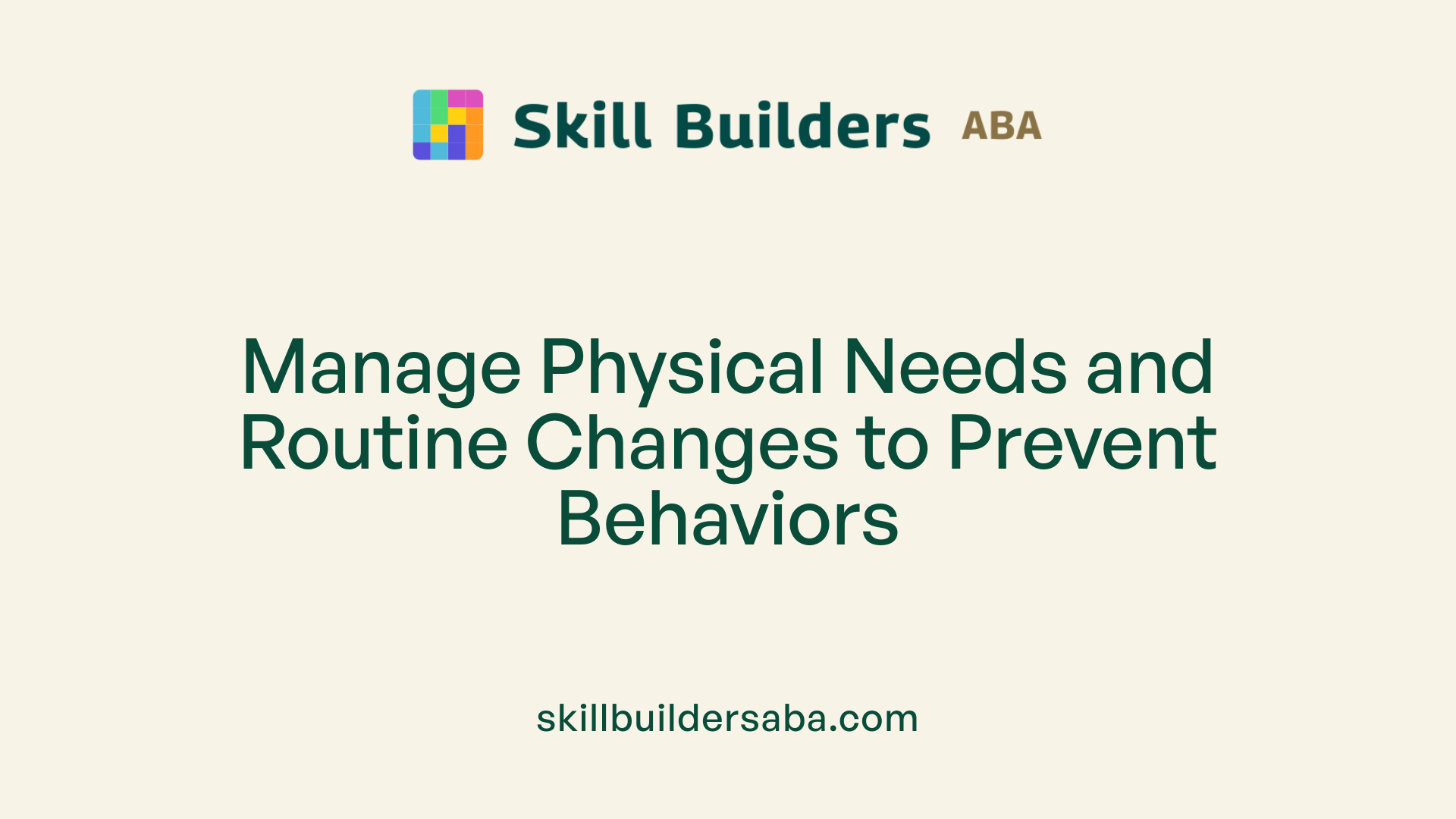
What are common physical and routine-related triggers, and how can they be managed?
Physical discomforts such as hunger, fatigue, illness, pain, dehydration, and unmet physical needs often spark challenging behaviors in children with ASD and other developmental disabilities. For example, a child experiencing hunger or tiredness may become irritable or aggressive, as they struggle to communicate their needs effectively. Similarly, discomfort from illness or pain that is not properly managed can lead to withdrawal or self-injurious behaviors.
Routine disruptions pose another significant trigger. Changes in daily schedules, unfamiliar environments, or unexpected events can cause anxiety or frustration, especially for individuals who rely on predictability. These disruptions may provoke behaviors such as tantrums, withdrawal, or aggression as a way to cope with uncertainty.
To effectively manage these triggers, caregivers should focus on maintaining regular physical care. This includes ensuring the individual has frequent opportunities for rest, scheduled meal and hydration times, and comfort through appropriate clothing or sensory support. Monitoring physical health and promptly addressing health issues also prevent discomfort-induced behaviors.
Creating predictable routines is vital. Visual schedules, countdown timers, or social stories help prepare the individual for upcoming activities or changes, reducing anxiety. When routine changes are unavoidable, advance notice and visual cues can ease transition-related distress. Gradual exposure to new environments and activities further facilitates adaptation.
Incorporating calming strategies such as sensory supports (e.g., noise-canceling headphones, soothing music) or relaxation techniques can also help individuals manage discomfort and routine changes, thereby minimizing the likelihood of challenging behaviors.
Implementing Person-Centered and Positive Behavior Support Approaches

How can developing individualized support plans help in managing challenging behaviors?
Creating tailored support plans is crucial for effective behavior management. These plans are based on detailed assessments of the individual's specific triggers, preferences, and strengths.
By understanding what causes behaviors—whether sensory overload, routine changes, or communication struggles—caregivers can design strategies that address these issues directly.
Such plans often include interventions like functional communication training, which gives individuals alternative ways to express their needs, and environmental modifications to reduce triggers.
Regularly reviewing and updating these plans ensures they stay relevant and effective as the person's needs evolve. This proactive approach can significantly decrease the occurrence of challenging behaviors.
Why is involving individuals in their support strategies beneficial?
Including the individual in developing their own support strategies boosts engagement and promotes independence.
When individuals participate in decision-making, they feel more in control and are more likely to cooperate with behavioral interventions.
This involvement can be through simple choices, like selecting preferred calming techniques or activities, which helps build their confidence and emotional regulation skills.
Moreover, their insights can reveal personal triggers and effective calming methods that adults might overlook.
How does positive reinforcement and personalized strategies contribute to behavior management?
Positive Behavior Support (PBS) relies heavily on positive reinforcement—rewarding desirable behaviors to encourage repetition.
This method is more effective and humane than punitive measures, fostering trust and reducing anxiety.
Personalized strategies are tailored to the individual’s preferences and needs, making them more likely to succeed. For example, using preferred music or sensory tools as calming aids can make behavioral interventions more engaging.
Together, these strategies help create a supportive environment where positive behaviors are recognized and reinforced consistently.
How are approaches to trigger identification and management promoted?
Person-centered methods focus on understanding each individual's unique needs, ensuring that interventions are customized rather than generic.
Involving individuals in their own care and observing closely their responses to different situations aids in accurately identifying triggers.
Using tools like functional assessments and behavioral observations allows caregivers to pinpoint environmental, emotional, or physical factors that precede challenging behaviors.
Implementing consistent routines, clear communication, and sensory-friendly modifications reduces the likelihood of triggers occurring.
Training caregivers and professionals on these approaches further enhances the system, leading to better management of triggers and improvement in overall behavioral outcomes.
By combining individualized assessments, active involvement, and positive reinforcement, support strategies become more effective and respectful of the individual's dignity and preferences.
The Significance of Emotional Regulation and Early Detection
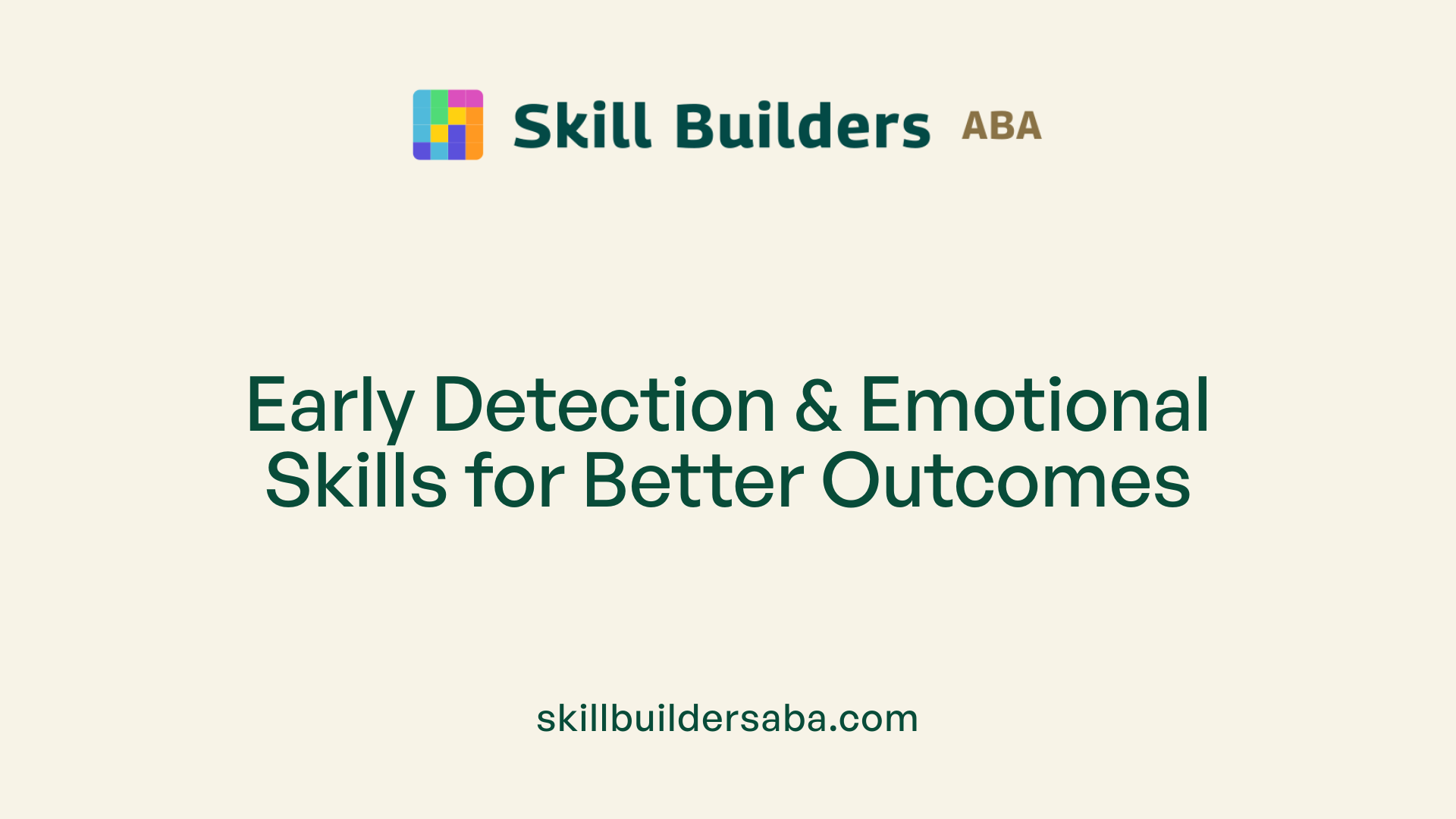
How can early signals and emotional signs indicate potential triggers?
Recognizing early warning signs of emotional distress is crucial in managing challenging behaviors in children with ASD and other disabilities. These signals include subtle cues such as irritability, stress, social withdrawal, or noticeable changes in facial expressions and body language. These indicators often appear minutes or even hours before an outburst, providing valuable opportunities for intervention.
By being attentive to these cues, caregivers and professionals can identify the moment when a child may become overwhelmed or upset. This awareness enables the implementation of calming strategies or support measures to diffuse potential escalation.
Developing emotional intelligence (EQ) is a vital part of this process. Teaching children to recognize and label their feelings, such as frustration or anxiety, helps them better understand their emotional state. Coping strategies like deep breathing, sensory breaks, or engaging in soothing activities can then be introduced to help children regain composure.
Training caregivers to observe and respond to these early signs plays a significant role in reducing challenging behaviors. Prompt, thoughtful responses not only prevent outbursts but also promote emotional resilience and self-regulation.
Overall, early detection combined with emotional skill development creates a supportive environment where children feel understood and empowered, leading to better behavioral outcomes and improved well-being.
Documentation, Reporting, and Continuous Improvement
 Recording behavioral incidents systematically is essential for understanding and managing challenging behaviors. Caregivers and professionals document not only the behaviors themselves but also the context in which they occur — including location, time of day, who is present, and what the child was doing beforehand. This detailed record helps identify patterns and possible triggers underlying the behavior.
Recording behavioral incidents systematically is essential for understanding and managing challenging behaviors. Caregivers and professionals document not only the behaviors themselves but also the context in which they occur — including location, time of day, who is present, and what the child was doing beforehand. This detailed record helps identify patterns and possible triggers underlying the behavior.
Analyzing collected data enables the team to recognize recurring themes, such as specific environmental factors or emotional states that precede challenging actions. For example, frequent outbursts after noisy surroundings might point to sensory overload as a trigger. Such insights are invaluable in refining assessment tools like the Comprehensive Assessment of Triggers for Behaviours of Concern Scale (CATS), which categorizes triggers into domains that include internal and external environmental factors.
Based on these findings, interventions can be tailored more precisely. If certain routines or activities consistently provoke difficulty, strategies like easing transitions or adjusting environments can be implemented. For instance, providing visual schedules or using calming techniques during known stress points can reduce triggers. Data-driven adjustments lead to more effective behavior support and help in creating proactive management plans.
Ongoing documentation also supports team communication and accountability. When all caregivers record and share observations, it fosters a shared understanding of what works and what doesn't, enabling consistent responses across settings. Moreover, regular reporting helps monitor progress over time, showing whether interventions are successful or require modification.
Adapting strategies based on evidence ensures continuous improvement. When behavioral patterns change — whether improvements or setbacks — teams can analyze new data to modify their approaches accordingly. This cycle of observation, analysis, and adjustment is fundamental for reducing the frequency and severity of challenging behaviors, ultimately improving the child's well-being.
In summary, systematic documentation and reporting play a pivotal role in behavior management. They provide a foundation for understanding triggers, refining interventions, supporting team collaboration, and fostering ongoing improvements, all of which are crucial for effective behavior support plans.
Addressing Challenging Behaviors Respectfully and Safely
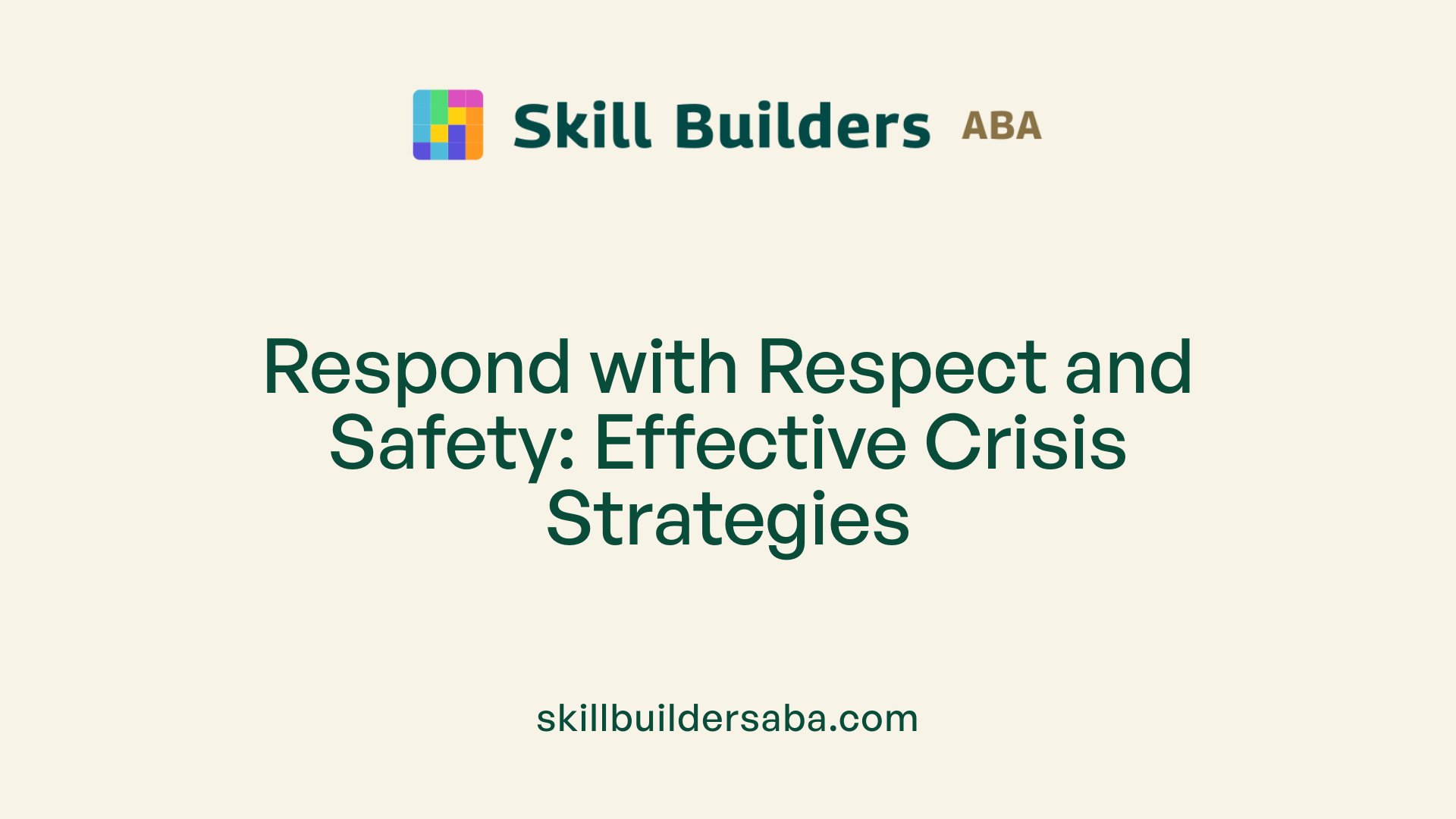
How should caregivers respond to challenging behaviors to ensure safety and respect?
When faced with challenging behaviors, caregivers must prioritize safety while maintaining respect for the individual. A calm and thoughtful approach helps de-escalate the situation and reduces the risk of harm.
One effective strategy is to use de-escalation techniques, such as speaking in a soothing tone, avoiding sudden movements, and giving the person plenty of space. This helps the individual feel less threatened and can reduce agitation.
Physical restraint should only be used as a last resort and by individuals trained in nonviolent crisis intervention. Even then, the goal is to minimize physical contact and focus on calming the person rather than controlling them.
Providing a safe environment is crucial. This might involve moving the individual to a quiet, less stimulating area or offering comforting objects or calming activities.
Understanding what the person is trying to communicate—such as discomfort, frustration, or needs—can guide more respectful and effective responses. Using gentle language, positive reinforcement, and reassurance helps maintain their dignity and supports emotional regulation.
It is important for caregivers to be trained in crisis management and to respond with empathy. This approach respects the individual’s feelings, preserves their self-worth, and promotes a sense of safety.
In summary, a respectful response to challenging behavior combines calm, safety-focused tactics with an understanding attitude, ensuring that interventions uphold dignity and support long-term positive behavior changes.
What are some specific de-escalation techniques?
- Speak softly and calmly.
- Use simple, clear language.
- Offer choices to give a sense of control.
- Use visual cues or timers for transitions.
- Distract with preferred activities or objects.
- Maintain a non-threatening posture.
How can safety-first response strategies be implemented?
- Remove dangerous objects from the environment.
- Create a designated safe space.
- Use non-physical calming methods first.
- Call for backup from trained staff if needed.
- Follow a predetermined crisis plan.
How to uphold dignity and respect during interventions?
- Always communicate respectfully.
- Avoid shouting or physical punishment.
- Give the individual privacy when possible.
- Focus on positive reinforcement of good behavior.
- Involve the individual in calming strategies.
The Role of Support Strategies and Environment Modifications

What environmental modifications can help manage triggers?
Creating an environment that minimizes potential triggers is crucial for supporting children and adults with ASD or learning disabilities. Small changes can significantly reduce the likelihood of challenging behaviors.
One effective strategy is to control sensory stimuli. This involves reducing noise levels by using sound-absorbing materials, turning down background noise, or establishing quiet zones where individuals can retreat when overwhelmed. Proper lighting, avoiding harsh or flickering lights, and providing comfortable seating and clothing also contribute to a calming environment.
Visual supports are powerful tools for preparing individuals for routine changes or transitions. Visual schedules, social stories, and cue cards help set clear expectations and reduce anxiety caused by the unknown. Using visual timers can clarify how long a task or activity will last, providing a sense of control.
Physical space adjustments can make a difference too. Minimizing intrusive stimuli, such as clutter or unpredictable movement, creates a more predictable setting. Sensory-friendly tools like noise-canceling headphones, fidget objects, or weighted blankets can help individuals regulate their sensory input.
Routine modifications also play a part in trigger management. Developing predictable schedules, incorporating regular breaks, and using visual cues for transitions help reduce feelings of uncertainty and frustration. The goal of these modifications is to create a safe, welcoming space that supports autonomy while reducing distress.
Overall, tailored adjustments that focus on sensory needs, routine stability, and physical environment foster a supportive atmosphere. These changes not only help manage triggers but also promote independence and positive behavior, making everyday experiences more manageable for individuals with complex needs.
Encouraging Skills Development and Resilience

How can skill development help prevent triggers and challenging behaviors?
Building essential skills in children and adults with ASD is vital in reducing the occurrence of challenging behaviors. When individuals learn to regulate their emotions, solve problems, and communicate effectively, they become better equipped to handle stressors and avoid situations that might trigger disruptive responses.
Teaching coping mechanisms such as deep breathing exercises, self-soothing techniques, and social problem-solving enables individuals to manage frustration and anxiety proactively. These skills empower them to stay calm during challenging moments, decreasing the likelihood of outbursts or harmful behaviors.
Promoting independence through functional skill training helps boost confidence and reduces reliance on maladaptive actions as a means of expressing needs or discomfort. As individuals become more capable of managing their daily routines and needs, they are less prone to frustrations that can lead to problematic behaviors.
Fostering resilience involves creating an environment that offers successful experiences and positive reinforcement. Activities designed to build persistence, adaptability, and self-efficacy help individuals handle setbacks better and develop healthier responses to stress.
Through consistent support and strategic intervention, skill development creates a supportive framework where triggers can be anticipated and managed more effectively. This not only results in fewer challenging episodes but also enhances overall emotional well-being, promoting a more autonomous and resilient mindset.
The Power of Mindfulness and Self-Regulation Techniques

What techniques enhance emotional regulation and help manage triggers?
Mindfulness practices are highly effective in promoting emotional regulation. Techniques such as breathing exercises, body scans, and guided imagery encourage individuals to focus on their physical sensations and breathing, which can help calm the nervous system during stressful or triggering moments.
Self-regulation strategies play a crucial role in managing triggers before behaviors escalate. These include taking sensory breaks to reset overwhelmed senses, visualizing calming scenarios, and maintaining structured routines that provide predictability and control. Such approaches help individuals stay aware of their emotional states and respond more thoughtfully.
Incorporating calming routines into daily life can significantly empower those with challenges to better handle their feelings. Routine relaxation activities, sensory engagements like listening to soothing music or using tactile objects, and visual supports such as charts or cues can serve as regular tools for emotional stability.
Training caregivers and support persons to model these techniques is vital. When they demonstrate consistent use of mindfulness and self-regulation practices, it encourages children and adults to learn and adopt these methods themselves. Integrating these techniques into everyday routines reduces the likelihood of emotional escalation, leading to fewer challenging behaviors.
Ultimately, cultivating mindfulness and self-regulation skills fosters resilience and greater emotional stability. This proactive approach not only minimizes triggers but also enhances the overall quality of life for individuals with autism and related conditions, helping them navigate social and environmental challenges more effectively.
Building a Supportive Community and Continuous Learning
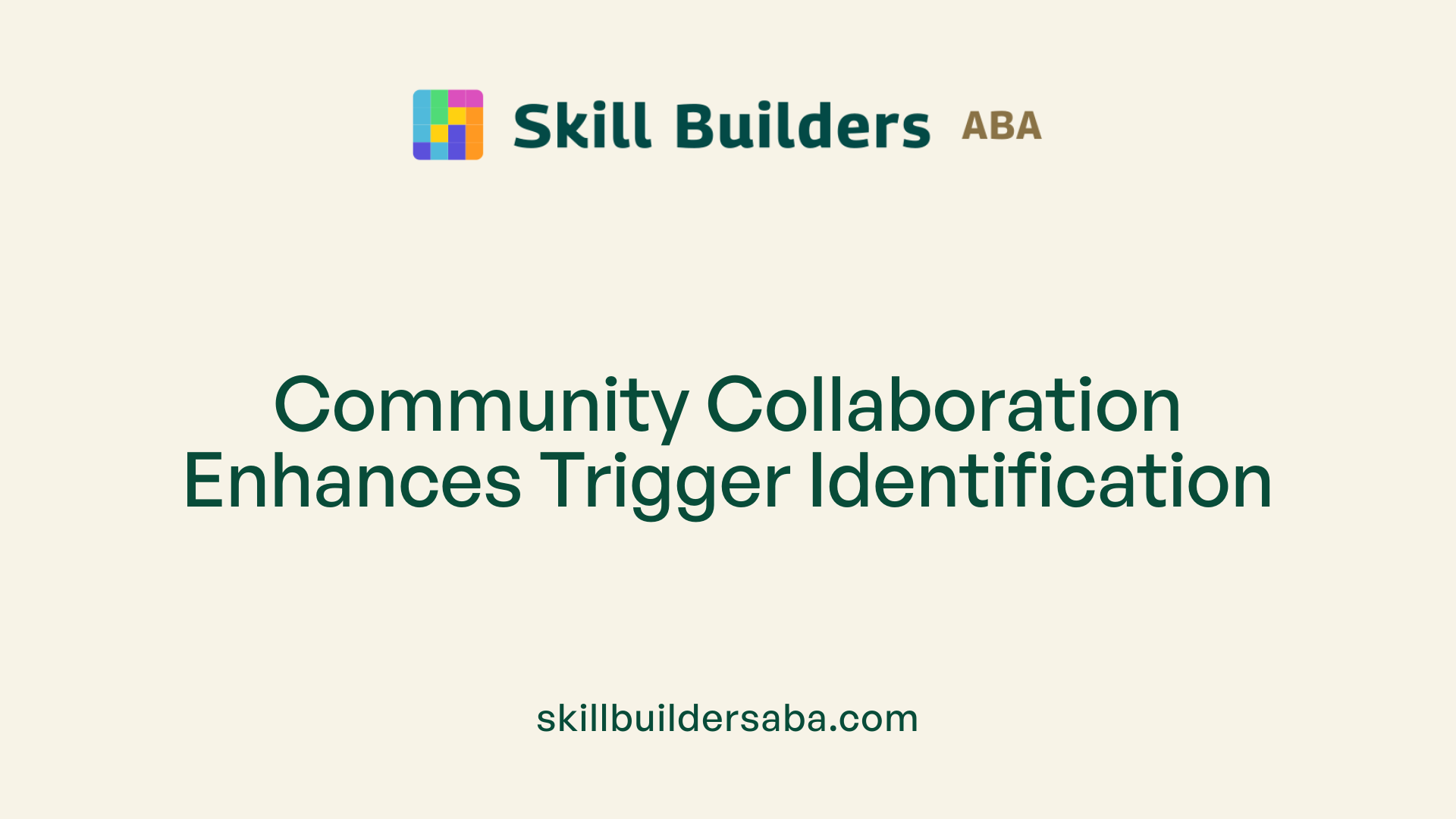
How does community involvement assist in trigger identification and management?
Community involvement plays a vital role in effectively managing challenging behaviors by offering a broader network of support and shared insights. When families, caregivers, and community organizations work together, they can more accurately identify triggers that lead to disruptive behaviors. Engaging in local workshops, support groups, and collaborative efforts with service providers helps create consistent strategies across different environments, which is essential for children with complex needs.
Sharing successes and effective strategies among community members fosters collective learning and encourages the adoption of positive approaches. This exchange of ideas helps identify new triggers or refine existing management techniques, ensuring that interventions are both practical and personalized.
Ongoing education and professional development are also crucial. They keep caregivers and professionals updated on the latest research, tools, and intervention strategies. When supported by a well-informed community, individuals are better equipped to implement proactive measures—such as environmental adjustments, routine modifications, and sensory accommodations—that prevent trigger situations before they escalate.
Moreover, community resources can include local workshops on managing sensory overload, stress reduction techniques, and behavioral strategies tailored specifically for children with ASD or other learning disabilities. Peer support groups provide emotional backing and practical advice, reducing feelings of isolation often experienced by families.
All these efforts culminate in a network that understands each child's unique needs, allowing for early intervention, consistent behavior management, and sustained progress. Ultimately, a strong community involvement reduces the frequency and impact of triggers, supporting children in achieving better emotional and behavioral stability.
Conclusion: Holistic Approach to Identifying and Addressing Triggers
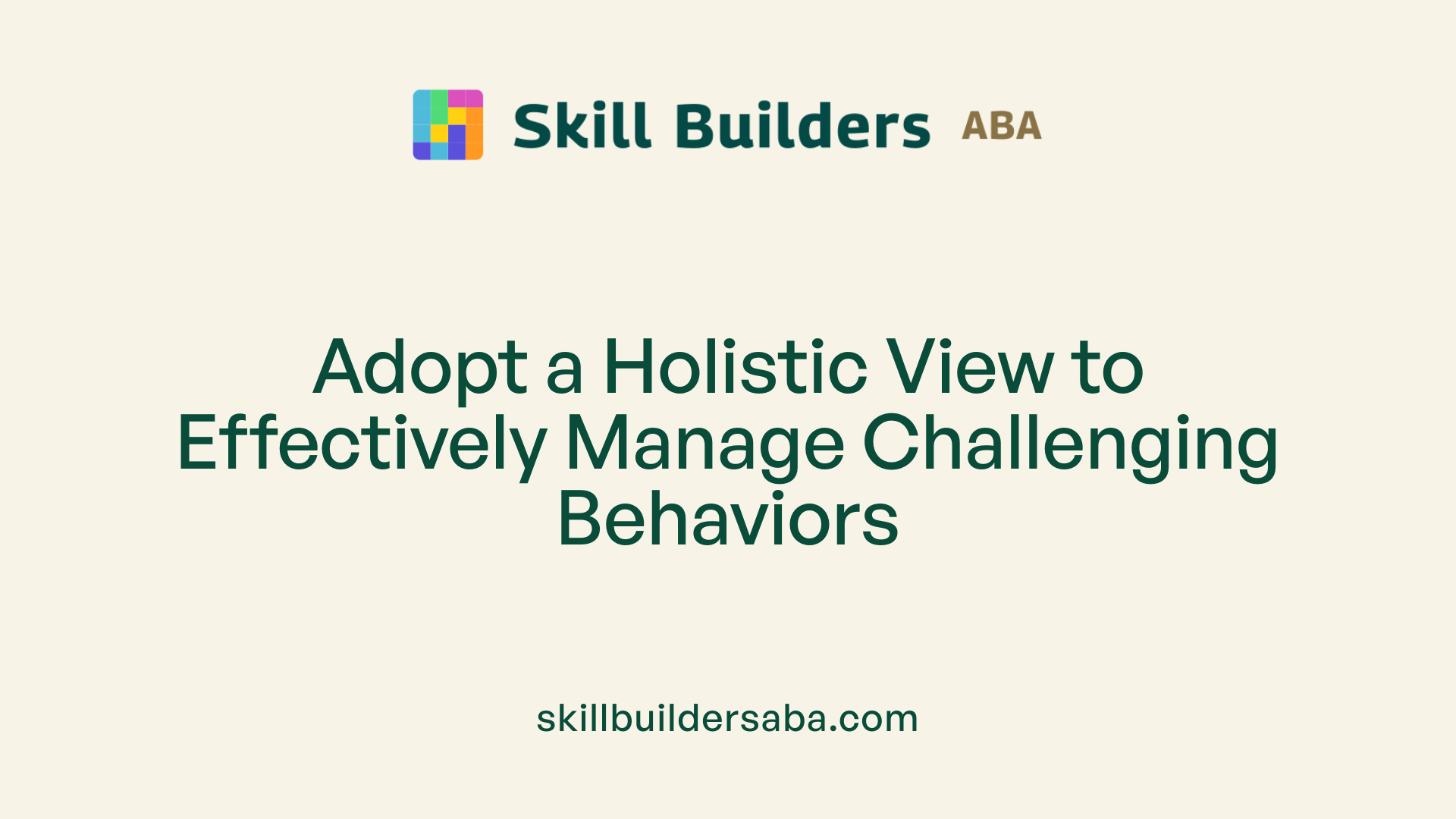
Why is a holistic approach essential in identifying triggers for challenging behavior?
A comprehensive view is crucial because it encompasses all aspects that can influence a person’s behavior—physical health, emotional state, environmental factors, and developmental levels. By combining detailed observations with thorough assessments, caregivers and professionals can better understand the specific triggers for each individual.
For example, changes in routine, sensory overload, communication hurdles, or physical discomfort all can play a role in triggering challenging actions. Recognizing these contributing factors requires observing the child's behavior in different contexts, noting what happens just before an outburst, and recording environmental details such as location, time of day, and who is present.
Intervention strategies should then be tailored based on this holistic understanding. Removing or modifying triggers, providing sensory support, or adjusting routines can make a significant difference. Collaboration among parents, caregivers, teachers, and healthcare professionals is vital in creating consistent, effective plans.
Furthermore, a dynamic, ongoing process of monitoring and data collection ensures changes are detected early. As individuals grow or their circumstances change, their triggers may evolve. Continuous learning and adaptation help maintain supportive environments that reduce the likelihood of challenging behaviors.
This approach underpins respectful, safe, and effective management, encouraging positive development and independence. Ultimately, it fosters a sense of security and well-being, emphasizing the person’s dignity while proactively preventing triggers that lead to disruptive or harmful actions.
| Aspect | Description | Example |
|---|---|---|
| Observation | Monitoring behavior in context | Noticing irritability before a meltdown |
| Assessment | Analyzing triggers systematically | Identifying sensory overload during loud activities |
| Intervention | Applying tailored strategies | Providing quiet space during overstimulation |
| Collaboration | Working with all stakeholders | Sharing observations among team members |
| Continuous Learning | Tracking changes over time | Updating support plans as needs evolve |
Recognizing the interconnectedness of these factors helps in creating effective, humane strategies that respect individual differences and promote positive behavioral outcomes.
Final Thoughts: A Pathway to Better Understanding and Support
Identifying triggers for challenging behavior is a nuanced process that demands careful observation, thorough assessment, and collaborative strategies. By understanding the physical, emotional, sensory, and environmental factors that influence behavior, caregivers and professionals can develop proactive and individualized supports. Employing tools like ABC charts, scales like CATS, and community resources enhances accuracy and effectiveness. With patience, respect, and continuous learning, it is possible to reduce trigger-related incidents, foster positive behaviors, and improve quality of life for those with autism and complex needs. This holistic approach ensures that support is compassionate, practical, and sustainable.
References
- [PDF] Identifying Triggers of Challenging Behaviour from an ABC Chart
- What Can Trigger Behaviours That Challenge and How to Prevent ...
- Identifying your child's behavior triggers - Understood.org
- [PDF] Navigating Through Challenging Behaviors - DSHS
- Comprehensive Assessment of Triggers for Behaviours of Concern ...
- [PDF] Finding the Reasons for Challenging Behaviour: Part 2
- Complete Guide to Managing Behavior Problems - Child Mind Institute
- Comprehensive Assessment of Triggers for Behaviours of Concern ...
- Assessment - Challenging Behaviour and Learning Disabilities - NCBI
.svg)














